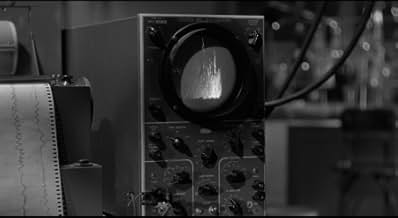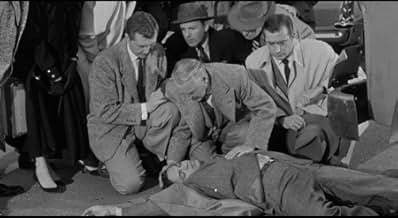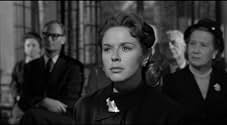CALIFICACIÓN DE IMDb
5.9/10
1.4 k
TU CALIFICACIÓN
Un brillante cirujano encierra el cerebro de su hijo muerto en un gran cuerpo robótico, con resultados imprevistos.Un brillante cirujano encierra el cerebro de su hijo muerto en un gran cuerpo robótico, con resultados imprevistos.Un brillante cirujano encierra el cerebro de su hijo muerto en un gran cuerpo robótico, con resultados imprevistos.
- Dirección
- Guionistas
- Elenco
George Douglas
- Official
- (sin créditos)
Roy Engel
- Police Inspector
- (sin créditos)
Sam Harris
- Man at Funeral Service
- (sin créditos)
Larry Kerr
- Reporter
- (sin créditos)
Harold Miller
- Airport Accident Extra
- (sin créditos)
Dick Nelson
- Charles - Chauffeur-Butler
- (sin créditos)
Foster H. Phinney
- Reporter
- (sin créditos)
Jack Richardson
- Reporter
- (sin créditos)
Court Shepard
- Reporter
- (sin créditos)
Charles Sherlock
- Airline Pilot
- (sin créditos)
Bert Stevens
- Airport Accident Extra
- (sin créditos)
- Dirección
- Guionistas
- Todo el elenco y el equipo
- Producción, taquilla y más en IMDbPro
Opiniones destacadas
Paramount produced this fascinating, low-budget gem in 1958 and release it with a second feature which was tailor-made to go with it (see `The Space Children'). They played together at drive-in theaters nation wide, and thousand of kids like me watched them both in wide-eyed wonder.
Young viewers (15 to 25 years old) who watch either of these films today tend to totally miss the point. `The Colossus of New York' is an admirable and well-crafted exploration of concepts that were years ahead of their time: ideas like sensory deprivation, organ transplants, psychic powers, and others. This movie is NOT simply a Frankenstein rehash (as several misguided reviewers have claimed).
The story is about a noble, humanitarian genius whose brain is placed in an unfeeling robot body. The film invites the viewer to ponder what makes each of us the sensitive and compassionate person we are (or should be).
If `The Colossus of New York' seems hockey and corny to you, remember that it was designed for an audience -- and a culture -- that existed almost half a century ago. If you have the maturity and the intelligence to translate this message from a by-gone age, you'll benefit from your efforts.
If not . . . well, it's your loss.
Young viewers (15 to 25 years old) who watch either of these films today tend to totally miss the point. `The Colossus of New York' is an admirable and well-crafted exploration of concepts that were years ahead of their time: ideas like sensory deprivation, organ transplants, psychic powers, and others. This movie is NOT simply a Frankenstein rehash (as several misguided reviewers have claimed).
The story is about a noble, humanitarian genius whose brain is placed in an unfeeling robot body. The film invites the viewer to ponder what makes each of us the sensitive and compassionate person we are (or should be).
If `The Colossus of New York' seems hockey and corny to you, remember that it was designed for an audience -- and a culture -- that existed almost half a century ago. If you have the maturity and the intelligence to translate this message from a by-gone age, you'll benefit from your efforts.
If not . . . well, it's your loss.
Contrary to what some critics and viewers may say, THE COLOSSUS OF NEW YORK was actually quite dark and atmospheric! This was an exemplary modern-day take on the "Frankenstein's Monster" theme! The performances were well-done, the solo-piano music by Van Cleave was brilliant, and the Colossus itself was actually well created for its time. Even the climax, no matter how "cliched" by today's standard, is still poignant.
I definitely reccommend this movie! I think it deserves to be on DVD as well!
-John Cassidy
I definitely reccommend this movie! I think it deserves to be on DVD as well!
-John Cassidy
The impressive title work is the viewer's first clue that producer William Alland and director Eugene Lourie squeezed considerable artistry and style from a shoestring budget. Look past the economic limitations; the suspenseful and imaginative story involves the death of a humanitarian genius whose father (a famous surgeon) and brother (a robotics expert) team up to keep the genius' brain alive in a robot body (well designed by ace effects artist John P. Fulton). The film's message concerns the nature of the soul and the role which physical sensations play in making humans act humane. Other affects by Fulton include one of sci-fi cinema's best death rays. All in all, a moving and intelligent movie
Despite some clunky moments I still think the best and most eerie part of Colussus of new york is when the "dead" scientist awakes, and gradually with mounting terror, realises his brain is in the body of a robot! This scene I'm sure influenced Director Paul Verhoeven when he made "Robocop" many years later. look at the creepy visuals in this scene as we see everything from the robots P.O.V and note that its visualisation is similar to what you see on an old Television monitor. those lines spoken by his creator "you can see, you can hear, you can speak and you can move" still sends a chill down my spine. I rate this as one of the best eerie mad lab scenes in the movies.
Although the title of this movie - "The Colossus of New York" - suggests that the Big Apple is terrorized for most of the running time, the title figure only goes on a (brief) rampage in the final few minutes. For just about the rest of the movie, the Colossus stays on a country estate near the city. Though it might have been more fun to show the Colossus on more of a rampage, the movie is still enjoyable. Certainly, there are some unintended chuckles, like the primitive science used to construct the Colossus. But there are actually some genuinely good moments here and there. The scene where the Colossus is first activated is both creepy and intriguing. And there are some pointed questions as to if the scientists are doing the right thing or not. Though the movie is cheap, there is some real atmosphere in part with the piano musical score, which gives this movie a really different feeling than other sci-fi movies of this period. Don't get me wrong - this isn't some intelligent masterpiece. But it manages to catch your attention, and at 70 minutes does not overstay its welcome.
¿Sabías que…?
- TriviaThe Colossus costume was eight feet tall, weighed 160 pounds and was made from burlap, plastic, rubber and fine chicken wire. Inside, there were batteries, cables, air tanks and oxygen tubes.
- ErroresWhen Jeremy (the Colossus) crashes through the glass wall at the end of the movie, the very next scene there is a woman lying on the floor and the man to the left of her looks down at her. In the scene following, the Colossus starts shooting eye beams. The eye beam then hits the woman, now standing, and she falls to the floor, in the same position.
- Créditos curiososThe opening credits text rises out of New York harbor, as its reflection on the water sinks to the bottom of the screen.
Selecciones populares
Inicia sesión para calificar y agrega a la lista de videos para obtener recomendaciones personalizadas
- How long is The Colossus of New York?Con tecnología de Alexa
Detalles
- Fecha de lanzamiento
- País de origen
- Idioma
- También se conoce como
- Der Koloss von New York
- Locaciones de filmación
- Productora
- Ver más créditos de la compañía en IMDbPro
- Tiempo de ejecución1 hora 10 minutos
- Color
- Relación de aspecto
- 1.66 : 1
Contribuir a esta página
Sugiere una edición o agrega el contenido que falta

Principales brechas de datos
By what name was The Colossus of New York (1958) officially released in Canada in English?
Responda































